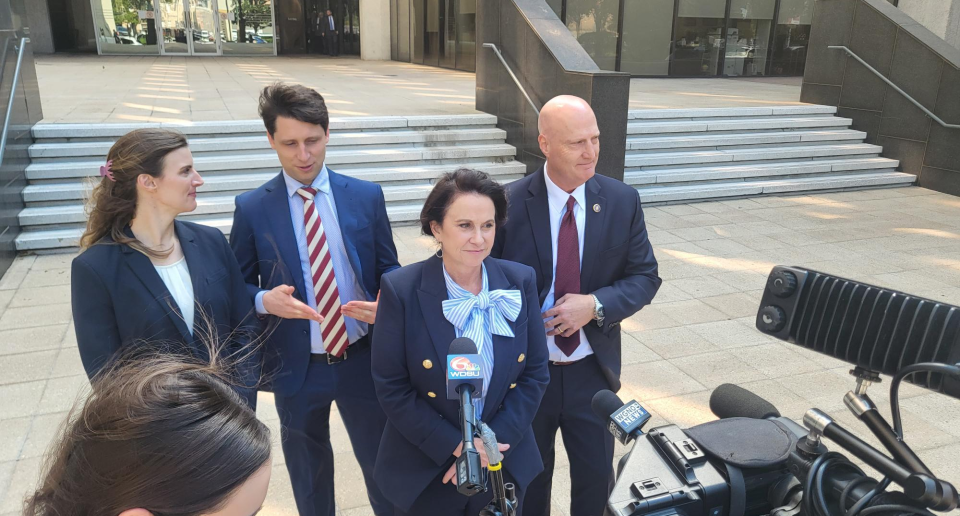FEMA lawyer says homelessness possible, not proven. Flood insurance hearing adjourns
After hearing nearly six hours of arguments for and against FEMA's flood insurance hikes, the judge hearing the case posed a question to the agency's attorneys.
"Would you concede that homelessness is irreparable harm?," asked U.S. District Court Judge Darrel J. Papillion.
His question was directed to Department of Justice attorney Yoseph Desta, who represents the Federal Emergency Management Agency. The agency is being sued by Louisiana and nine other states. They seek an injunction to pause the roll out of the new way FEMA prices flood insurance.
Desta responded to the judge's homelessness question by saying the case is not about that but whether the state and local governments will suffer irreparable harm. According to Desta, many people have seen a reduction in their rates under the new individualized risk assessments, and to pause the program would harm those people.
The judge's question came during Desta's closing argument, and he said homelessness may occur but was not proven by the state. He then said that pausing the new insurance risk assessment method, Risk Rating 2.0, would harm those who received discounts from it.
"I'd concede it in the abstract," Desta said of the homelessness. He then added, "If Risk Rating 2.0 is preliminarily enjoined, it has real harm for policy holders who've seen reductions in Louisiana and across the country."

The proceedings adjourned without a decision, but Papillion said he would make a ruling "as promptly as possible."
In the center of the courtroom, five tables were packed with attorneys from both sides of the case. Each of the four witnesses called by the state had a separate attorney question them, and none were cross examined by the government lawyers.
In closing arguments, Solicitor General Liz Murrill said Risk Rating 2.0 exceeds FEMA's vested powers. She said it is and has caused irreparable harm to the parishes by pricing people out of them. The plan, she said, is based on of faulty or incomplete data -- data used in a methodology that they say FEMA will not share publicly.
She likened it to a natural disaster.
"This is a hurricane of its own," she said. "It's a slower moving storm that rips things apart just as much." Murrill then attacked the secrecy of FEMA's formula, "If they are forcing us to pay it, they have to tell us how."
Desta argued, on behalf of FEMA, that these programs are voluntary, and that if the states don't like it, they don't have to participate.
Murrill's team countered that if local governments do not participate, their communities are denied the option to do so. For individuals to join the National Flood Insurance Program, their governing entities must adopt laws or ordinances that fall in line with FEMA's rules.
The Director of the Louisiana Governor's Office of Homeland Security and Emergency Preparedness Casey Tingle, one of four witnesses called Thursday by Murrill, is the go-between for Louisiana and FEMA. According to Tingle's testimony, 318 communities in Louisiana have adopted FEMA's rules, and 16,000 structures in Louisiana received grants from FEMA to rebuild after natural disasters.
More: FEMA representatives argue agency not required to make flood insurance affordable
More: New Orleans federal judge to hear arguments to pause FEMA Risk Rating 2.0
Tingle explained that these grants now have a rule that the building's owner must maintain flood insurance for the life of the building. The mandatory flood insurance must be maintained even if the building exchanges ownership. If it does not, Louisiana is on the hook and must pay back the grant in its entirety.
Much of Risk Rating 2.0 has taken effect, but it is limited by law on how much flood insurance prices can rise each year. That limit is 17.9% a year. The average total increase to Lafourche will be 321%, and for Terrebonne, 305%. The hardest hit parish is Plaquemines, which will see a 545% increase.
Desta responded that the yearly limit on insurance increases and the cap on per year payments of $12,000 protects families from harm. These limitations, he said, did not exist prior to Risk Rating 2.0. Before Risk Rating 2.0, there was no cap at all, and he provided an example of a family paying $55,000 a year.
Desta said the new model is just adding more variables when it determines the risk factors of an area beyond just elevation, and the costs now reflect these risks.
"It's taking into account additional values that we all know there are in flood risks," he said, referring to witnesses from Lafourche, and St. Charles Parishes. He then addressed the accusation that data was inaccurate, "They are just factually wrong."
This article originally appeared on The Courier: Hearing on FEMA flood insurance Risk Rating 2.0 adjourns

